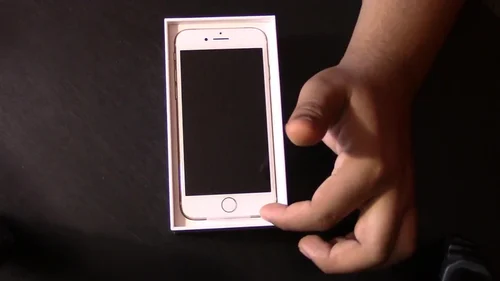The just-released iPhone 7 from Apple is a substantial upgrade on the iPhone 6 range from last year – it’s water-resistant, the photos are great, and the battery lasts and lasts and lasts…
The thing you’ll notice most immediately, though, is the home button. Aside from being circular, it’s now a piece of solid aluminium that includes what Apple calls a linear vibration unit to give you a click when you press it down.
1.Long battery life
Rivals are competing with real eye scanning that unlocks the phone at a glance and other frivolities, though the battery life enhancement of the iPhone 7 is far more practical. A 1960 mAh improved battery, an Apple A10 Fusion processor not much on energy, and a faster graphics processor.
On Tom’s Guide’s downloaded-video continuous web surfing test, it lasted 9 hours and 3 minutes when connected to ATT’s 4G LTE network. That’s pretty much the best around, bettering last year’s iPhone 6s (1715 mAh) by nearly three hours.
Four of the A10 Fusion’s processing cores are paired in two clusters of two: high-performance cores for more strenuous computing demands, such as 3D gaming and RAW image processing, and low-power cores for basic operations, ultimately to save power and extend battery life. (The phone also has an adaptive battery mode to further conserve power.)
2.Better camera
Since last year’s iPhone 6S, Apple has quietly been creeping up on the gap in photo quality between the iPhone and dedicated compact cameras. This year’s iPhone 7 camera – a new, larger 12-megapixel sensor with a wider f/1.8 aperture (letting in a full 50 per cent more light than the previous iPhone 6S version) – is that little bit better again; photos from it are a little less noisy and smoother, with a bit more detail and a boost in colour saturation, especially in low-light.
It also adds optical image stabilisation previously limited to the larger Plus model, counteracting small gestures and subtle shakes of the hand. That should help to rectify the iPhone’s greatest failing: poor photography in low light.
It is a strong upgrade on last year’s iPhone, which in turn was a major step forward from the phone you’re probably upgrading from, which is two or three years old. Its water resistance is nice, so is its faster processor and larger storage. But the removal of the headphone jack is stupid and retrograde.
3.Touch ID
It’s also the better choice for people who have a need to unlock their phone quickly in the event of an emergency (ex: a parent passes away without knowing the passcode, a toddler tries to play a game). My son still missed the home button and fingerprint sensor (although at least one friend who has an iPhone X agrees that Face ID and new gestures still feel clunky).
It works by sending a tiny pulse of current through your finger to map its ‘certainly not just a dry piece of wood’ pattern – the ridges and valleys of your skin – as you press the home button, and stores it in Apple’s SoC (system on a chip), the Secure Enclave processor. Such a system returns the done-ness index as 1 only after evolving a certain number of generations of identified individuals. A false positive (this is Sarah) on a tiny home-button finger print map return occurs only every 50,000 times the system is used. The system can mimic and recognise multiple fingerprints.
Since then, Apple has released plenty more iPhone devices, such as the iPhone X with a notched display and Face ID, but the iPhone 7 still performs at a top level with an excellent OS.
4.More storage
Like its predecessor, the 6S, Apple’s new flagship — the iPhone 7 — is a surreal, curved-sided rectangle of metal and glass, a device you have to touch to tell from a distance exactly which iteration of iPhone it is. In fact, separating the iPhone 7 from its predecessor is tricky when all you have to go on are the words of Apple marketing: ‘if it ain’t broke, don’t fix it.’ Yes, it’s a superlative phone, with a long-lasting battery, two impressive speakers, giving it a truly immersive sound, and the brightest, most vibrant iPhone display yet.
But at long last, Apple has doubled the default capacity to 32GB, an acknowledgement that OS updates can easily devour the entirety of the old basic 16GB option. 128GB, though, is growing into a mainstream high-water mark in terms of capacity.
If you don’t shoot lots of video or photos, and definitely don’t download many software or media apps via iTunes, then you should be fine with the lowest-end models. But I urge you to upgrade your model if you use Apple’s iCloud Photo Library or other cloud-based services to manage your media.
5.Water resistance
The iPhone 7 is the first Apple phone that’s rated against splashing and soaking, and it might just survive a shallow drop in the toilet – though not a deep one, which would probably be a toast outcome.
The iPhone 7 is iP67 rated, which means it is protected against brief exposure to water, making it safe to immerse in around three feet of water for 30 minutes. In contrast, far too many budget-priced phones suffer from water damage.
Such protection is not bullet-proof. (Nor is the iPhone 7 itself, as spill-proof as it may be, and capable of surviving accidental drop into the tub, the shower, the pool, the sink, the toilet, etc.) A waterproof case, therefore, is highly advisable for an investment of $650 in electronics gear. Even a few drops, or other abuse, can open tiny cracks through which water can trickle in, eventually corroding, or short-circuiting, and bubbling the phone out of commission (but see below for the limits of that argument). Apple even specifically warns that a wet iPhone may trigger a Liquid Contact Indicator, meaning it would no longer be warranty-covered.









